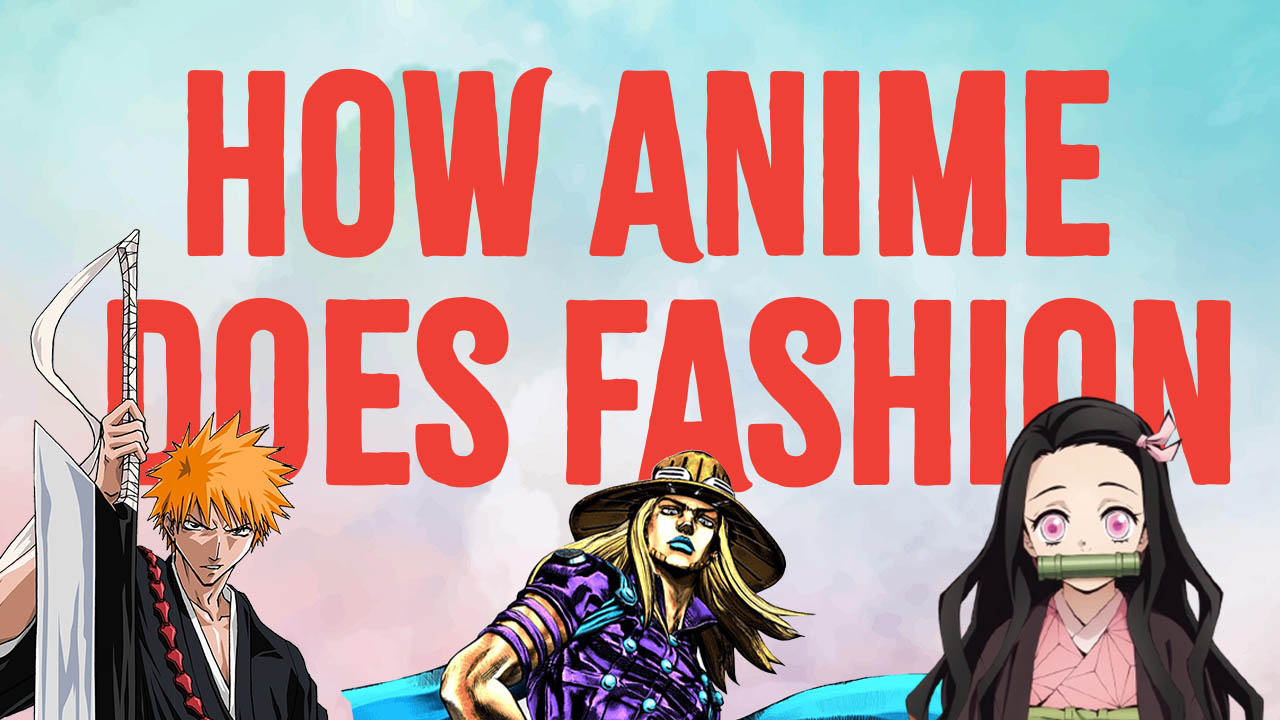How anime does fashion
 CREDIT: FSU PUBLICATIONS AND COMMUNICATIONS DEPARTMENT
CREDIT: FSU PUBLICATIONS AND COMMUNICATIONS DEPARTMENTWith the final season of Bleach having aired in Fall 2022 and JoJo’s Bizarre Adventure’s sixth season finishing earlier this year, it’s interesting to look at and appreciate the fashion sense of different anime.
Bleach is a story about ghosts, the supernatural, and soul reapers (people who fight the supernatural). The main character, teenager Ichigo Kurosaki has the ability to see ghosts that other people can’t see. Through a series of events and his own biological destiny, Ichigo becomes a part-time soul reaper that fights Hollows, lost and corrupted souls that cause havoc and destruction in reality and outside of reality, while also dealing with an extremely powerful and corrupt society of fellow soul reapers.
In between the action in the original manga, author Tite Kubo liked to go beyond and include the characters wearing elaborate street clothes and interesting fashion attire. Kubo himself got the idea for the manga from the desire to draw a Shinigami (Japanese Death God) in a kimono.
Sometimes a panel will include the characters wearing matching outfits like various full black outfits fitted with chains and wristwatches. Others panels will show one character with a black puffy winter jacket with a hoodie underneath and some jeans. Another character may be shown wearing a paper bag on their head like a hat, with full denim clothing that has interesting purple patterns and a brown scarf around their neck.
Fashion YouTuber, Frugal Aesthetic said that some of the soul reaper outfits appear to be inspired by one of Yohji Yamamoto’s collections and one of the casual outfits by Vivian Westwood’s Pirates Collection.
Needless to say, the drip was clean.
Now if you’re looking for something more flambouyant, JoJo’s Bizarre Adventure takes a whole other approach to fashion with some early works inspired by action movie characters from the 80s to several of its characters dressing like runway models in more recent volumes.
JoJo’s Bizarre Adventure started as a story about the Joestar family, a family possessed with immense psychic strength with chronicles of their cursed struggles against the forces of evil. But the finale of the recent season has introduced an element that further complicates an already bizarre and expressive series of stories.
Hirohiko Araki is well known for taking a wide degree of influences from around the world, with American musicians and British rock bands being the names of prominent heroes and villains in JoJo storylines. It’s lesser known however, that Araki also takes inspiration from high fashion magazines like Vogue for the cover pages of new JoJo volumes.
Main characters strike poses on cover pages like the one in JoJo’s Bizarre Adventure: Golden Wind Chapter 3, where Giorno Giovanna copies a pose from the Gianna Versace Donna A/W Catalogue 1995-1996. Araki also frequently collaborates with brands like GUCCI with Part 6 specifically having clothes from the GUCCI x JOJO collaboration back in 2013. The elaborate aesthetics take inspiration from Antonio Lopez’s fashion illustrations and Tony Viramontes colour and style.
However, when you think of anime, you also think of Japan and some of the most stylish Japanese traditional attire comes from Demon Slayer.
Demon Slayer is set in historical Taisho Era Japan, where Western fashion had only just begun to influence the local styles so most people wore haori or kimono. Characters of the show wear distinctively coloured patterns, which makes many of them immediately recognizable to viewers.
Tanjiro Kamado wears a green and black checkered box patterned kimono (called “ichimatsu” in Japanese) after a famous kabuki performer in the 1700s. The pattern symbolizes prosperity for your family and longevity. Nezuko, Tanjiro’s sister, wears a pink hemp leaf patterned kimono (called “asanoha” in Japanese), with a red and white ichimatsu patterned belt. They represent health for children and growth, since hemp leaves don’t break easily and grow very quickly. Tanjiro’s friend Zenitsu wears a yellow haori with white triangles, a scale pattern called “urokomon” in Japanese. The pattern meant to ward the wearer from curses and evil often being worn by samurai that believed it would keep them from harm.
Many of these patterns are still used in modern designs and can be found in clothing sold by Japanese clothing outlets. Some stores available in Canada that specifically offer wider ranges of Japanese clothing and items include Uniqlo and MUJI. Independent stores in Toronto like Blue Button Shop offer larger selections of Japanese style clothing if you’re just looking for that aesthetic and you’re in town.
In conclusion, for some anime streetwear, subtle or bold, you can definitely find inspiration from Bleach fashion panels, the covers of JoJo manga, or some traditional Japanese patterns in Demon Slayer.
Anime has a great sense of fashion and I hope to see more manga authors really explore their own unique brands of fashion for us to enjoy.

















